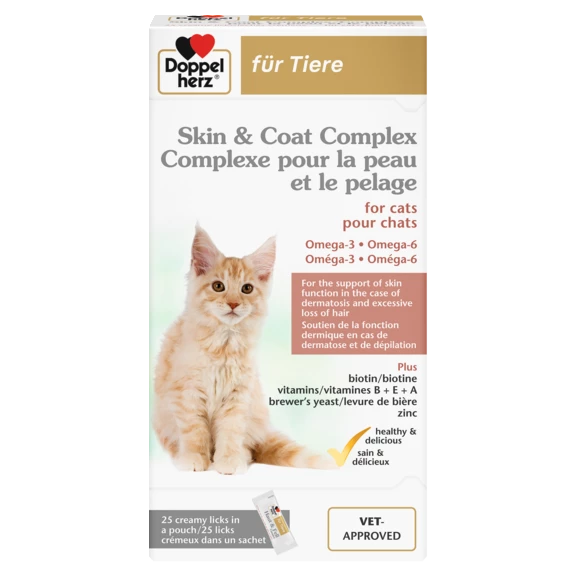Twice a year - in spring and autumn - there is a special time for the cat: The change of coat. As a cat owner, you will notice this phase clearly when more and more fine hairs from the cat's undercoat collect on furniture, floors and clothing. Not only long-haired cats with a lot of undercoat lose an astonishing amount of hair during the coat change, short-haired breeds also shed. But the most
tedious part of the shedding process is, of course, for the cat itself, because it has to actively comb out the old coat by licking it off with its tongue.
But with diligent brushing and special food, you can make these phases a little easier for your darling. For outdoor cats, the shedding period lasts about six to eight weeks. In cats that live exclusively indoors, the change of coat is often less pronounced due to the relatively constant indoor climate and can extend in this form over the entire year.
Spring coat change
The spring coat change begins as soon as the days get longer and the temperatures start to rise and can therefore vary in time. In spring, the cat naturally sheds the most, as the dense warm winter coat is now replaced by the thinner summer coat.
Coat change in autumn
It almost seems as if your cat's coat becomes denser and grows stronger on its own in autumn. However, as temperatures drop, cats lose fur for the second time in the year - this time the airy summer coat. In its place is a much denser coat of fur. The warm undercoat becomes denser and the summer outer coat less. Therefore, many cats do not shed as extensively in autumn as in spring.
How to support your cat during the shedding process
The best way to help your cat change its coat is to brush it regularly. Although the cat is capable of "combing" the hair out of the coat with its tongue when brushing, a lot of hair will accumulate in the cat's stomach. In the best case scenario, the animal will bring such a hairball back to light a short time later in the form of a hairy sputum.
However, too much hair in the stomach can also lead to serious digestive problems such as gastritis or even intestinal obstruction. To prevent this, you should comb your cat at regular intervals - for long-haired cats even daily. This is especially true for long-haired cats with a lot of undercoat. In addition, you can positively influence the cat's digestive process with special ingredients. For
example, fibres promote gastrointestinal transit and oils prevent the hair from clumping.
It all comes down to the right diet
During the shedding period, the need for all the nutrients, vitamins and minerals needed to build new hair increases. Hair consists largely of a protein called keratin. Especially in long-haired cats, almost one third of the protein consumed through food is used for hair growth during this time. In addition to the amount of protein, the composition of the protein is important. Hair contains particularly high amounts of methionine and cystine - two of the essential amino acids.
Each individual hair is also covered by a lipid layer. The fats contained therein are responsible for the shine and suppleness of the coat. Essential fatty acids, which cannot be produced by the body on its own, must be supplied with food. A number of vitamins and minerals are important for hair growth as they are involved in the necessary metabolic processes (e.g keratin synthesis); e. g. vitamin E, B vitamins, biotin (also called vitamin B8 or vitamin H), zinc, copper and iodine.
